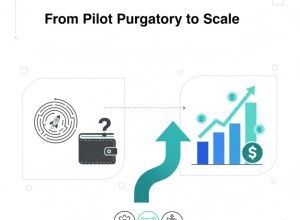Factory Simulation to Cut Changeover Time: Case-Based Guide
Frequent product changeovers are now the norm in modern manufacturing. Yet, every changeover brings downtime, rework, and scrap risk. Factory simulation allows engineers to model the impact of new setups, operator sequences, and buffer sizes before touching the real line. This article explains how to apply simulation pragmatically to reduce changeover time—supported by real industrial cases.
Why Changeover Simulation Matters
On high-mix lines, changeovers can consume 10–30% of available time. Traditional time studies and Excel-based planning don’t capture the interactions between machines, conveyors, and human tasks. Simulation tools let teams test “what-if” scenarios to minimize bottlenecks and train operators virtually before production switches.
Core Concepts
- Discrete-event simulation (DES): Models system flow through events like start, stop, and waiting.
- Agent-based modeling (ABM): Simulates operator decisions, shift patterns, and human-machine interactions.
- Hybrid simulation: Combines material flow and control logic using digital twin data and PLC emulation (see Virtual Commissioning).
Data Sources for Simulation
- Historical changeover logs: From MES or historian systems, showing actual time distributions.
- Cycle and downtime data: Pulled directly from OPC UA or PLC tags (see Digital Twin Modeling).
- Work instructions: Operator sequences from lean SOPs.
- Layout data: CAD geometry or simplified floor plans with resource distances.
Case 1: Beverage Line SKU Switchover
A beverage producer simulated the changeover of PET bottle formats across 10 filling lines. The digital model integrated conveyor logic, operator tasks, and cleaning sequences. By reordering flushing and labeling operations in parallel, changeover time fell from 48 to 34 minutes per line—an annual gain of 1,200 production hours.
Case 2: Automotive Subassembly Line
An automotive supplier used simulation to test fixture swap strategies. A discrete-event model showed that introducing quick-release clamps and pre-staging tools cut changeover time by 43%. The results guided capital spending on standardized fixtures, avoiding €90k/year in lost throughput.
Simulation Workflow
- Define scope: Which line, which SKUs, and what constraints?
- Build logic model: Capture machine states (Idle, Running, Changeover) and material flow.
- Import data: Feed real cycle-time distributions and operator tasks.
- Run scenarios: Evaluate alternative sequences, staffing, and buffer sizes.
- Validate: Compare simulated vs. actual times for one or two past changeovers.
Interpreting Results
Look beyond single numbers—simulation output includes distributions, bottleneck maps, and Gantt charts. Focus on:
- Which task dominates downtime?
- How do parallel tasks overlap?
- Which buffers are consistently empty or full?
- What happens under shift delays or missing operators?
Integration with MES and Scheduling
When integrated with MES, the simulation can test upcoming production schedules automatically. The twin checks whether planned SKUs violate time or capacity limits, then suggests reordering to minimize idle time. This transforms simulation from a one-off study into a decision-support system.
Quantifying ROI
Typical results:
- Changeover time reduction: 20–40%
- Throughput increase: 5–15%
- Payback period: <6 months on simulation licenses and training
Simulation becomes self-funding once a few improvements reach production.
Common Pitfalls
- Over-modeling: Don’t chase millisecond accuracy; focus on operator sequences and constraints.
- Ignoring human factors: Include operator fatigue, skill level, and resource conflicts.
- No feedback loop: Always validate with historian or MES data post-changeover.
Q&A
Which simulation tools are best?
For DES, FlexSim, Plant Simulation, and AnyLogic dominate. For 3D integration, Unreal or Unity add visual fidelity but require discipline to avoid over-detailing.
Can this link with the digital twin?
Yes—the simulation becomes the dynamic twin for operational planning. Data and logic reuse ensure consistency across engineering and operations.
What skill sets are required?
Start with process engineers trained in lean and basic DES. Data integration (OPC UA, SQL) adds value but can grow later.
Related Articles
- The Practical Digital Twin: What to Model, What to Ignore
- Virtual Commissioning for Faster Startups: PLC, HIL, and Twin Integration
- MLOps for OT: Versioning, Drift, and Model Monitoring on the Edge
Conclusion
Factory simulation is the fastest route to measurable changeover improvement. With real process data, focused models, and iterative validation, plants can reclaim hours of productive time each week. The key is not complexity—but relevance. Model what drives downtime, and ignore what doesn’t.









































Interested? Submit your enquiry using the form below:
Only available for registered users. Sign In to your account or register here.